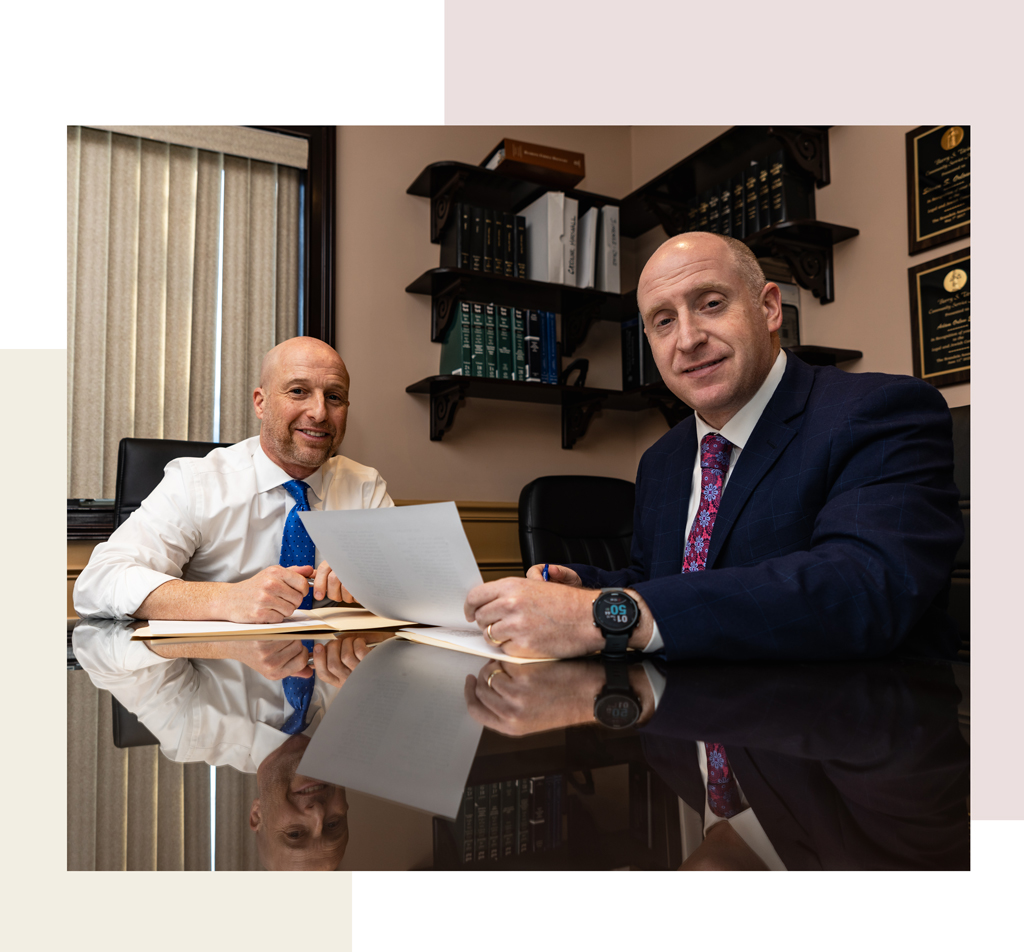If you’ve been a victim of an accident in New York that led to personal injury, you may be well aware that the impact goes beyond medical bills and lost wages. The emotional and psychological toll—often referred to as “pain and suffering damages“—is a crucial part of your experience, and the law allows you to seek compensation for these non-economic damages. Understanding what constitutes pain and suffering in a New York personal injury case and how it is calculated can be complex. This comprehensive guide aims to shed light on this often misunderstood aspect of personal injury law in New York City.
Key Takeaways
- Pain and suffering include both physical pain and emotional distress and are considered non-economic damages in a personal injury case.
- Several factors, such as the severity of your injury and its impact on your daily life, are considered when calculating pain and suffering damages.
- Legal representation is essential to maximizing your compensation for pain and suffering.
- Call (646) 647-3398 For A Free Case Evaluation
By reading further, you’ll gain insights into the types of pain and suffering recognized by New York courts, how these damages are calculated, and how an experienced New York City personal injury attorney can help you maximize your case.
Types of Pain and Suffering in New York Personal Injury Law
In the legal landscape of New York personal injury cases, the term “pain and suffering” is often used to refer to the non-economic damages a victim may go through after an accident. These are damages that don’t have a specific monetary value but significantly affect the victim’s quality of life. In New York, pain and suffering can be broadly categorized into two types: physical pain and emotional suffering.
Physical Pain: This category pertains to the actual physical injuries you sustained in the accident. These could range from minor injuries like bruises and cuts to more severe injuries such as fractures, burns, or spinal cord injuries. Physical pain also takes into account any ongoing medical treatment, surgeries, or therapy required to treat these injuries, as well as any long-term or permanent physical impairments.
Emotional Suffering: Beyond the physical injuries, victims often experience emotional and psychological distress following an accident. This could manifest as anxiety, depression, loss of enjoyment of life, or even more severe conditions like Post-Traumatic Stress Disorder (PTSD). Emotional suffering also takes into account the victim’s changed relationship with friends and family, as well as any disruptions in day-to-day activities, hobbies, or work.
Consortium Loss: In some New York personal injury cases, a spouse can also claim for loss of consortium, which refers to the loss of companionship, emotional support, and intimate relations as a result of the victim’s injuries.
Quality of Life Impact: Sometimes, the injuries sustained can lead to permanent changes in your lifestyle. This could involve long-term care, use of mobility aids, or home modifications to accommodate disabilities. This category looks at how the injuries have permanently impacted your ability to enjoy and partake in life’s activities.
In essence, pain and suffering in New York personal injury law is multidimensional, covering both the physical and emotional aspects of a victim’s life. Understanding these types can help you better articulate your claims and seek the most comprehensive compensation possible. For personalized guidance tailored to your situation, call (646) 647-3398 for a free case evaluation.
How Pain and Suffering is Calculated in New York
In New York, pain and suffering are generally calculated using one of two methods: the “Multiplier Method” and the “Per Diem” approach.
Multiplier Method: This is the more commonly used method. Here, the economic damages (like medical bills and lost wages) are totaled and then multiplied by a number (usually between 1.5 and 5) based on the severity and impact of your pain and suffering. The resulting figure is considered a fair compensation for your non-economic damages.
Per Diem Method: This approach assigns a specific dollar amount for each day you’ve experienced pain and suffering, starting from the date of the accident until you reach “maximum medical improvement.” The daily rate is often based on your actual daily earnings.
Factors Affecting Calculation: Several factors can influence the final compensation amount. These include the severity of the injury, the type and duration of medical treatment required, the impact on daily life, and the emotional trauma suffered.
Jury’s Role: In cases that go to trial, the jury has a significant role in determining the amount awarded for pain and suffering. They will consider evidence like medical records, expert testimony, and the victim’s own account to arrive at a suitable compensation amount.
No Caps: Unlike some other states, New York does not impose a cap or limit on the amount of compensation that can be awarded for pain and suffering in most personal injury cases. This means that the jury has considerable discretion in awarding damages based on the facts of the case.
Calculating pain and suffering accurately requires deep understanding of the legal processes involved and can vary from case to case. For this reason, it’s vital to have an experienced New York City personal injury attorney guide you through the complexities of your case. To discuss your case and potential compensation, call (646) 647-3398 for a free case evaluation.
Factors Affecting Pain and Suffering Damages in NYC
Severity of Injury: The more severe your injuries, the higher the likely compensation for pain and suffering. Serious injuries that require extended medical treatment, surgeries, or result in permanent disability have a more significant impact on your quality of life.
Duration of Recovery: The length of time it takes for you to recover plays a role in calculating pain and suffering. Longer recovery periods often result in higher compensation due to the prolonged emotional and physical distress.
Impact on Daily Life: How the injury affects your everyday activities, relationships, and ability to work is crucial. The more disruptive the injury, the higher the potential for substantial pain and suffering damages.
Age and Pre-existing Conditions: Younger individuals may receive higher compensation due to the longer-lasting impact of an injury. Pre-existing conditions can also affect the calculation if they are worsened by the accident.
Medical Treatment: The type, length, and cost of medical treatment can influence pain and suffering damages. Ongoing treatments, multiple surgeries, or long-term medication can indicate a higher level of suffering.
Emotional Trauma: Psychological impacts like depression, anxiety, or PTSD are considered when calculating pain and suffering. Documented therapy or psychiatric treatment can serve as evidence of emotional suffering.
Witness Testimony: Testimonies from family, friends, or co-workers about how the injury has impacted your behavior, emotional state, and social interactions can also be considered.
Personal Accounts: Personal journals or video logs detailing your daily pain and emotional state can serve as compelling evidence in your case.
Legal Representation: Having an experienced NYC personal injury lawyer can significantly affect the amount you receive for pain and suffering. They can effectively present your case and negotiate for a fair settlement or represent you in court.
Understanding these factors can help you make a more informed decision about pursuing your personal injury claim for pain and suffering damages. Given the complexities involved, it’s beneficial to consult with an experienced personal injury law firm in New York. For personalized advice tailored to your case, call (646) 647-3398 for a free case evaluation.
Documentation for Substantiating Pain and Suffering
When pursuing a personal injury claim in New York for pain and suffering, presenting substantial evidence is crucial. Without adequate documentation, even the most legitimate claims may not receive fair compensation. Below, we outline the types of documentation that can substantiate your claims for pain and suffering damages.
Medical Records: One of the most compelling forms of evidence, medical records detail the extent of your injuries, the treatments you’ve received, and your recovery progress. They can also provide evidence of ongoing pain or long-term disabilities.
Photographs: Photos of your injuries, as well as the accident scene, can serve as tangible proof of your suffering and can supplement medical records in painting a complete picture of your experience.
Expert Testimonies: Medical professionals can testify to the extent of your injuries and how they affect your day-to-day life. Psychologists and psychiatrists can speak on emotional traumas you might be facing.
Personal Journals: Keeping a diary that tracks your daily pain levels, emotional state, and how your injuries affect your activities can serve as compelling evidence in court.
Witness Statements: Friends, family, and colleagues who have observed changes in your physical and emotional well-being can be called upon to provide statements about your pain and suffering.
Prescription Records: These can indicate the level of pain you’re experiencing and can also serve as evidence of emotional distress if you’ve been prescribed medication for anxiety or depression.
Financial Statements: While these primarily cover economic damages, they can also indirectly validate your claims for pain and suffering by showing the breadth of medical treatments you’ve needed.
Video or Audio Evidence: In some cases, video or audio clips that capture your physical and emotional state after the injury can serve as evidence. This can include surveillance footage or audio recordings of doctor’s evaluations.
Proper documentation is vital for maximizing your claim for pain and suffering damages in New York personal injury cases. Given the complex nature of gathering and presenting evidence, seeking legal guidance is strongly recommended.
For a comprehensive evaluation of your case and expert assistance in documenting your pain and suffering, call (646) 647-3398 for a free case evaluation.
Caps on Pain and Suffering Damages in New York
No Caps on General Damages: Unlike some states, New York does not have a cap on general damages for pain and suffering in personal injury cases. This means there’s no predetermined upper limit on the amount you can receive for non-economic damages like emotional distress or loss of enjoyment in life.
Exceptions for Medical Malpractice: It’s important to note that while there are no caps for general personal injury cases, New York does have a cap for non-economic damages in medical malpractice cases related to obstetric services. However, these caps only apply to the healthcare provider’s liability and not to the total amount a plaintiff can receive from all defendants.
Jury’s Discretion: Since there are no statutory caps on pain and suffering, the amount awarded is largely at the jury’s discretion. They consider various factors like the severity of the injury, its impact on your life, and the evidence presented.
Appeal and Reduction: While there are no caps, it is possible for a judge to reduce an award if they believe it to be “excessive” in light of the evidence presented. Likewise, an inadequate award can be appealed for a higher amount.
Comparative Negligence: New York follows a “pure comparative negligence” rule, which means that your compensation can be reduced by the percentage you are found to be at fault for the accident. This applies to both economic and non-economic damages, including pain and suffering.
The absence of caps on pain and suffering damages in New York personal injury law provides victims with the opportunity to claim full and fair compensation. However, successfully doing so often involves navigating a complex legal landscape, making it imperative to consult with a seasoned personal injury attorney. For more information and a tailored strategy to maximize your pain and suffering damages, call (646) 647-3398 for a free case evaluation.
How The Orlow Firm Can Help Maximize Pain and Suffering Compensation
Navigating a personal injury case in New York City is a complex process. This is especially true when you’re seeking compensation for intangible damages like pain and suffering. At The Orlow Firm, we have decades of experience in representing victims and helping them secure the compensation they rightfully deserve. Here’s how we can assist you:
In-depth Case Evaluation: Our legal team will thoroughly assess your case to identify all possible areas of compensation, including both economic and non-economic damages.
Expert Collaboration: We work with medical experts, vocational analysts, and other professionals to provide a comprehensive evaluation of your pain, suffering, and other damages.
Documented Evidence: We’ll guide you in gathering all the necessary documentation that can substantiate your claims, making your case stronger for negotiations or a jury trial.
Skilled Negotiation: Our attorneys are skilled negotiators who will represent your best interests when dealing with insurance companies, aiming for a fair settlement that accurately reflects your pain and suffering.
Trial Readiness: If a fair settlement is not achievable, we are fully prepared to take your case to court. We’ll aim to present a compelling case to the jury to maximize your compensation for pain and suffering.
Personalized Approach: Every case is unique, and so is our approach. We’ll tailor our legal strategies to match the specific circumstances of your case, ensuring you receive individualized legal services.
By entrusting your case to The Orlow Firm, you’re not just getting legal representation; you’re gaining advocates who will stand by you every step of the way. To discuss the details of your case and find out how we can help maximize your compensation for pain and suffering, call (646) 647-3398 for a free case evaluation.
Pain and Suffering in Settlements vs. Court Judgments
When you’re seeking compensation for pain and suffering in a New York City personal injury case, you have two main routes: settling out of court or going to trial. Both options come with their own set of advantages and challenges. Below, we outline the differences between pain and suffering damages in settlements and court judgments.
Settlements: Advantages and Considerations
Speed and Certainty: Settlements are generally quicker and provide a guaranteed amount of compensation. This is often desirable for victims facing financial hardships.
Privacy: Settlements are private matters that don’t become part of the public record, offering you a level of discretion that’s not available in a court case.
Negotiation: In a settlement, your NYC personal injury attorney can negotiate directly with the opposing party, aiming to secure the best possible compensation for your pain and suffering.
Less Stress: Avoiding the courtroom can reduce emotional and psychological stress, which is particularly significant when you’re already dealing with physical and emotional pain.
Court Judgments: Advantages and Considerations
Potential for Higher Awards: If your case is strong, a jury may award a higher amount for pain and suffering than what you could negotiate in a settlement.
Public Record: Court judgments are public, which could either serve as a deterrent against negligent behavior or, conversely, could bring unwanted public attention to your situation.
Time-Consuming: Going to court can be a lengthy process, often taking several months or even years to reach a verdict.
Uncertainty: There’s always a risk that the jury may award a lower amount than expected, or even rule against you.
Understanding the pros and cons of settlements versus court judgments is essential for making an informed decision on how to proceed with your personal injury case. Given the complexities and potential pitfalls of both routes, consulting an experienced NYC personal injury attorney is highly recommended.
If you’re unsure about the best course of action for your specific case, The Orlow Firm can provide trusted guidance. For a detailed evaluation of your case and personalized advice, call (646) 647-3398 for a free case evaluation.
FAQs About Pain and Suffering in New York Personal Injury Cases
Navigating a personal injury case in New York can bring up numerous questions, especially concerning pain and suffering damages. Below, we answer some frequently asked questions to provide clarity on this complex issue.
What Constitutes Pain and Suffering in New York?
Pain and suffering encompass both physical pain and emotional distress experienced due to an accident or injury. This can include anxiety, depression, loss of enjoyment of life, and other forms of emotional trauma.
How is Pain and Suffering Calculated?
There’s no definitive formula for calculating pain and suffering in New York. Factors like the severity of your injury, its impact on your daily life, and the quality of your documentation can all affect the amount awarded.
Is There a Cap on Pain and Suffering Damages?
No, New York does not impose a statutory cap on pain and suffering for general personal injury cases. However, there can be caps in specific instances, such as in medical malpractice cases related to obstetric services.
What Types of Evidence Can Support My Claim?
Evidence can include medical records, photographs of injuries, expert testimonies, personal journals, witness statements, and prescription records, among other things.
Can I Claim Pain and Suffering if I Was Partially At Fault?
Yes, New York follows a “pure comparative negligence” rule, meaning you can still claim damages even if you are partially at fault. However, your compensation will be reduced by the percentage of your fault.
How Long Do I Have to File a Claim?
The statute of limitations for personal injury cases in New York is generally three years from the date of the accident. However, there are exceptions and different timelines for specific types of cases.
Should I Settle or Go to Court?
Both options have pros and cons. Settlements are generally quicker but may offer lower compensation, while court judgments can potentially bring higher rewards but are riskier and more time-consuming.
How Can a Lawyer Help?
A skilled personal injury attorney can guide you through the complex legal process, help gather evidence, negotiate with insurance companies, and represent you in court, if necessary, to maximize your compensation.
Understanding the ins and outs of pain and suffering damages in New York personal injury cases can be challenging. For more tailored advice and a comprehensive case evaluation, call (646) 647-3398 for a free case evaluation.
Why Choose The Orlow Firm for Your Case
When you’re grappling with a personal injury and the resulting pain and suffering, you need an advocate who can stand up for your rights and seek the compensation you deserve. Here’s why The Orlow Firm should be your go-to choice for legal representation in New York City:
Expertise: With decades of experience in New York personal injury law, our attorneys have the in-depth knowledge needed to navigate complex cases and secure maximum compensation.
Personalized Approach: Every injury and victim is unique, and so is our approach to each case. We tailor our strategies to your specific circumstances, ensuring you receive personalized attention and legal services.
Resourceful Team: We collaborate with a network of experts, including medical professionals and forensic specialists, to build a compelling case that accurately reflects your pain and suffering.
Client-Centric: Our ultimate goal is your well-being and satisfaction. We take the time to understand your needs and concerns, and we’re always available to address any questions you may have.
Transparency: We maintain an open line of communication throughout your case. You’ll always know the status of your case, what to expect next, and how we’re fighting on your behalf.
Strong Negotiation Skills: We have a proven track record of securing fair settlements through skilled negotiations with insurance companies, saving you time and reducing stress.
Courtroom Ready: If a satisfactory settlement is not possible, we are prepared to take your case to trial. Our attorneys have the litigation experience to present your case convincingly in front of a jury.
No Upfront Fees: We work on a contingency basis, meaning you won’t owe us anything unless we win your case. This ensures that you have access to high-quality legal representation, irrespective of your financial situation.
With The Orlow Firm on your side, you’ll have the confidence and support you need to focus on your recovery, while we focus on securing the compensation you deserve for your pain and suffering. For a comprehensive evaluation of your case, call (646) 647-3398 for a free case evaluation.










